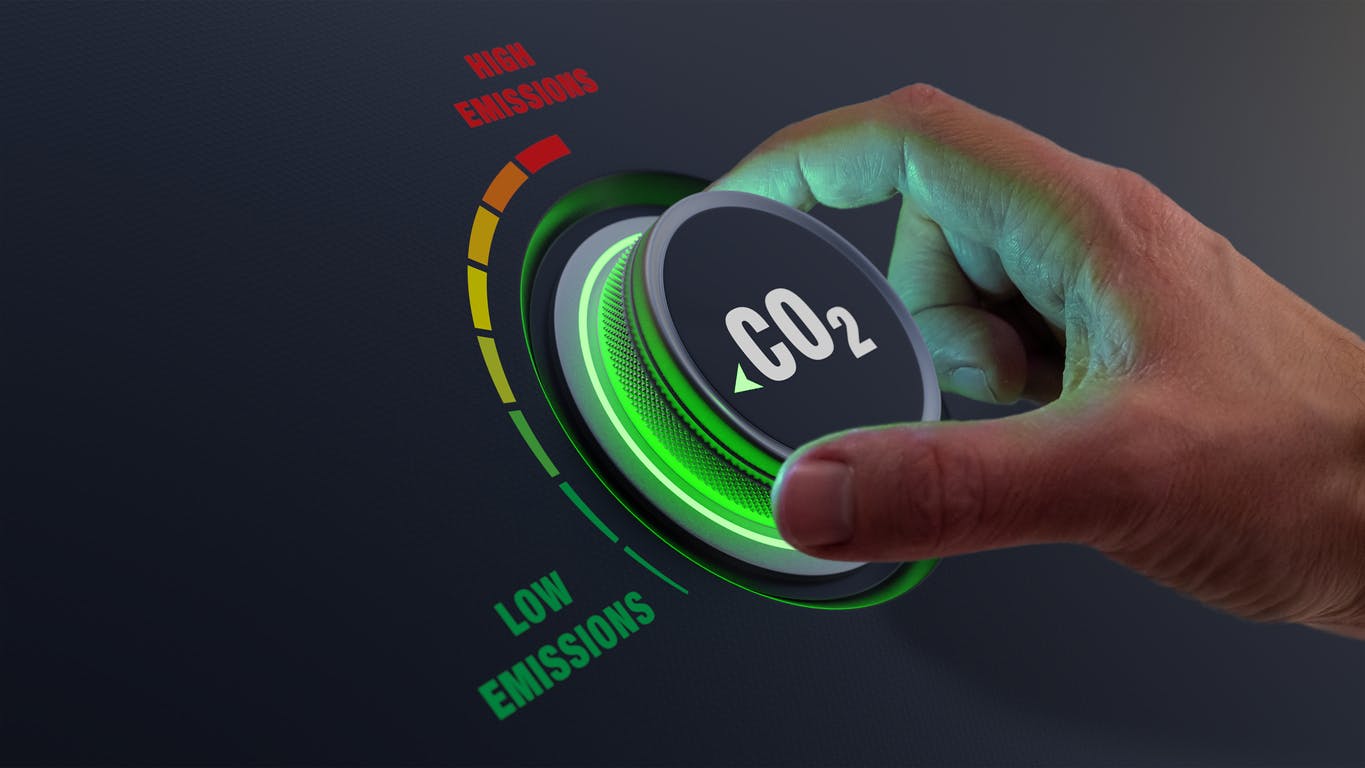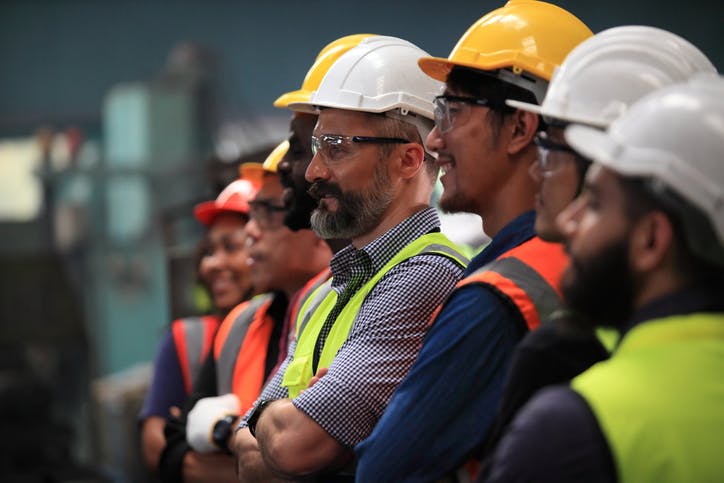Increase of average temperature, a decrease of ice coverage, rise of sea levels, self-amplifying feedback phenomena… Recently reaffirmed by the latest IPCC report, these threats are becoming increasingly palpable for both citizens and institutions. And as this collective awareness emerges – which we can only hope will grow – carbon accounting appears to be the remedy for all companies’ environmental ills. While it is clear that carbon accounting makes it possible to evaluate the number of emissions attributable to an organization, both the political and economic world tend to underestimate its interest.
Due to a lack of awareness and intrinsic motivation from organizations, these evaluations still result in a status quo in which no one feels responsible for monitoring environmental indicators. Yet, the success of a carbon audit depends mainly on its appropriation by the stakeholders.
Deepomatic has already assessed its emissions twice. These estimates were implemented in-house to understand all the mechanisms involved and to adapt them to the complex mechanisms of the digital sector. Our goal in sharing our experience is to encourage all organizations to use these tools and benefit from their potential. Here are our five tips for conducting a successful evaluation.
Tip #1: Take ownership of the key concepts around assessment tactics
In our opinion, the first step to making the process sustainable is to understand how the accounting system works. Once the evaluation work is completed, the one who ordered/commissioned it will obtain quantified orders of magnitude, allowing them to orient the organization’s strategy. But behind the apparent neutrality of the figures, there are methods and biases that employees must understand to make the process live beyond its initial conclusions. Among the concepts to be appropriated, a few seemed essential to us.
There are several standards for estimating emissions or having them assessed. All of them have their requirements, be it the list of greenhouse gases (GHG) taken into account or the scope of the perimeter to be adopted. These standards are associated with tools enabling them to meet these conventions. They all have in common that they rely on the use of emission factors. These factors are coefficients that allow converting an organization’s activity data into equivalent greenhouse gas emissions through simple calculations – like the multiplication of a given quantity by the right factor to obtain a carbon equivalent.
All these evaluations take into account the impact of a given list of different GHGs. The reason why we talk mostly about CO2 is that carbon dioxide is used as a standard for simplification purposes. Indeed, all these gases, whose main property is their capacity to absorb part of the emissions composed of infrared, do not have the same degree of harmfulness to the atmosphere. We use the unit Global Warming Power (GWP) for easy comparison and conversion of the impact of these gases to CO2eq. This single unit allows for quantifying the impact of various gases.
Tip #2: Define a broad scope of responsibility for vulnerabilities analysis
There are several reasons why companies would choose such an approach. From the most cosmetic to the most relevant: to strengthen its employer brand, to raise awareness within the company, to obtain orders of magnitude, to promote actions with the most impact, and finally, from a more strategic perspective, to identify its vulnerabilities in the face of rising energy prices.
At present, it seems impossible to escape the risks of climate change. But it is possible to anticipate these changes and make ourselves less vulnerable to them – starting by taking into account the widest operational and organizational perimeter when assessing emissions.
Some standards and regulations do not require the consideration of all emission perimeters. However, the majority of these emissions are often included in the category of other indirect emissions. For example, scope 3 represents 94% of Deepomatic’s GHG emissions. Not taking it into account would mean not anticipating a major vulnerability factor.
It is best to jointly consider whether the organization is responsible and dependent on this source of emissions. In the case of Deepomatic, we felt it was necessary to factor in the impact of outsourcing our annotation. We asked our partner employees to provide information about their office space, energy consumption, and IT infrastructure to allocate a portion of our impact to ourselves in proportion to our share of their annual revenue.
Tip #3: Customize your balance sheet to refine your results
As seen above, the accounting tools offer a bank of emission factors whose purpose is to facilitate estimation when it is impossible to make a direct measurement. These factors are validated by various authorities depending on the country of production. Although they come from a rigorous process, they sometimes have high margins of uncertainty that need to be corrected to get as close as possible to reality.
For example, the main source of some sectors like ours is inputs and services. However, the Bilan Carbone® tool only proposes monetary emission factors to take them into account. The idea is that an expense of X€ multiplied by the factor specific to a given sector is equal to Y kgCO2eq. Because of the uncertainty, their use does not value the efforts in terms of supplier selection. That’s why we recommend that all organizations engage in a dialogue with their stakeholders to obtain information to adapt the emission factor from generic to customized data.
Many times, there is simply no suitable factor. We encountered this problem when trying to assess the impact of our cloud usage. Since our business is responsible for and dependent on this item, we found it wise to develop a method to get an order of magnitude and integrate a realistic emission factor into our accounting tool.
Tip #4: Be aware of the inherent limitations of the approach
Assessments make it possible to measure the impact of greenhouse gases other than CO2, but it is vital to bear in mind all the limitations of this approach. Indeed, carbon accounting responds to the challenges of climate change but ignores other phenomena that are just as threatening.
For example, they do not inform us about other issues such as abiotic resource consumption, water consumption, or biodiversity loss. As Emma Haziza, a hydrologist specializing in the resilience of territories to extreme climate risks, reminded us, there is water behind every kWh consumed. This observation applies particularly to the tech sector, which relies on a large extractive industry requiring larger water quantities.
Not only is this accounting exercise the first stone in building an ambitious environmental policy, it is also the most successful approach currently. But that doesn’t mean that the CO2 indicator should be our only focus of attention. Carbon accounting only provides access to a part of a much larger, more systemic environmental problem.
Tip #5: Keep the process alive beyond its initial conclusions
To avoid the pitfall of inaction, we believe making the process live beyond the production of deliverables is essential.
Carbon accounting must be seen as an iterative process with a view to continuous improvement. It is too complex for an organization to refine every monetary emissions factor on the first try. Ideally, each review should be an opportunity to determine what can be improved to maintain employees’ commitment to the initiative. Regular updates on the actions implemented to reduce emissions or on the evolution of emissions are also welcome. Since completing our second Bilan Carbone®, we have been trying to set up a system for the almost continuous evaluation of our emissions to inform our employees quarterly.
For maximum efficiency, these accounts must first serve a purpose: a better knowledge of our impact to reduce it and inform our stakeholders. Claiming it to be “carbon neutral” by offsetting its emissions for the sole purpose of communication will have no virtue in the long run. The challenge lies in translating the conclusions drawn from the carbon assessment into concrete actions. At Deepomatic, we have put in place transportation restrictions, encouraging our employees to use low-emissive modes of transportation while optimizing their trips.
Involvement and sharing: those are the keywords to keeping these accounts alive. If we want the approach to outlive its deliverables, it must involve all its direct employees by informing them and soliciting them regularly. It must then be extended to all of its stakeholders, encouraging them to define their footprint and informing them of changes on their own.
Conclusion
Carbon accounting is nothing more than an intangible tool, a set of rules and conventions. While they include information and action objectives, their use or results’ interpretations are not guaranteed. Those must be handled with care, and estimates refined over time. At Deepomatic, we are committed to ensuring that the company’s environmental policy strongly impacts how our product is imagined and designed. Obtaining reliable data about our business and digital footprint is the main focus of our environmental policy. The goal is to build robust and easily identifiable sustainable performance indicators in addition to more traditional economic indicators.
“Climate Change 2021. The Physical Science Basis. Summary for Policymakers“, IPCC, 7 August 2021
- The GHG Protocol and ISO 14064 are the authoritative standards worldwide, while carbon accounting is under the regulatory Bilan-GES or Bilan carbone® in France.
- The Bilan-GES standard only requires the inclusion of scopes 1 and 2 in France, with only direct and indirect emissions related to the consumption of electricity, heat, or steam necessary for the legal entity's activities. Taking into account scope 3, which includes all other emissions, is optional but recommended.
- “Estimating the carbon footprint of an enterprise software. The case of Deepomatic“, Deepomatic, January 2021.
- Hydrologist Emma Haziza’s alarm call, Earth Food, June 27, 2021.
- About the issues around this term for companies, see “Les avis de l’ADEME. La neutralité carbone” (French), ADEME, July 2021.




